Indoor Garden Ideas —14 Ways To Live Amongst Greenery That Will Make Your Life Better

These indoor garden ideas prove that no matter the size, style, or location of your home, it is completely possible to live with plants and to have a little garden at home. All you have to do is to choose the right varieties.
'When it comes to indoor plants, consider ones that can thrive in low-light situations and are great for keeping atop desks and shelves,' says Kat Aul Cervoni, landscape designer and founder of Staghorn NYC, and The Cultivation by Kat.
Inspired? Take a look at these most popular houseplants to get started.
1. Choose plants local to the climate
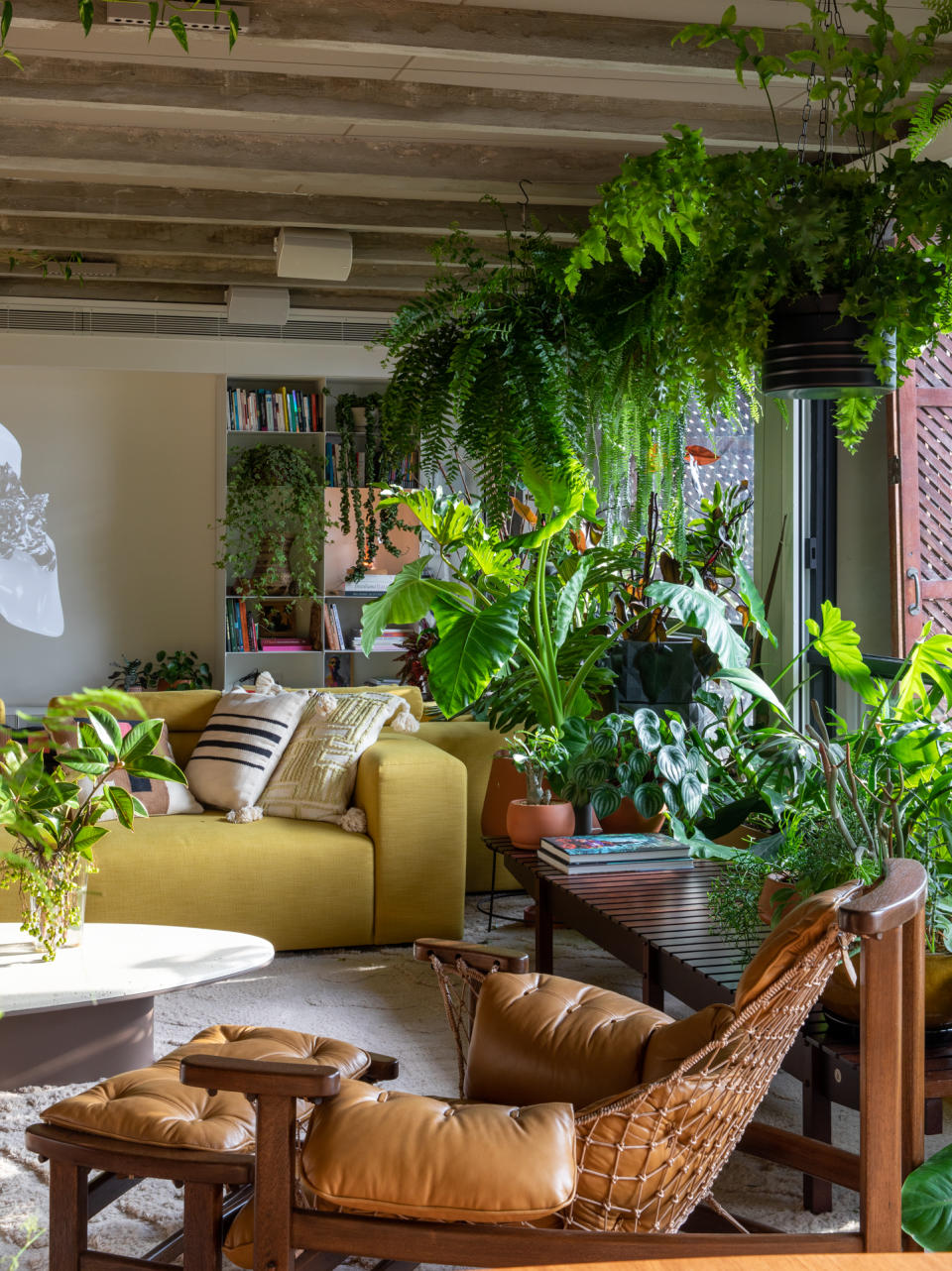
To completely transform the environment and decor of your home, consider bringing in low maintenance plants for indoor gardening, and witness how the temperature and mood of the home relaxes.
'A long-suspended flower box crosses all the integrated environments and draws, together with the floor vases and pendants, a private biome,' says Guto Requena of Estudio Guto Requena. 'The vegetation is capable of creating a specific microclimate, reducing high temperatures and improving air quality. In The Terrace Apartment, the house management system can be controlled virtually through mobile devices or locally through smart keypads or voice commands, allowing you to set different scenarios, from day-to-day to workstations, parties, or cinemas. Accesses, lighting, irrigation, audio and video, curtains and furniture, all are automated.'
2. Decorate a winding staircase with plants
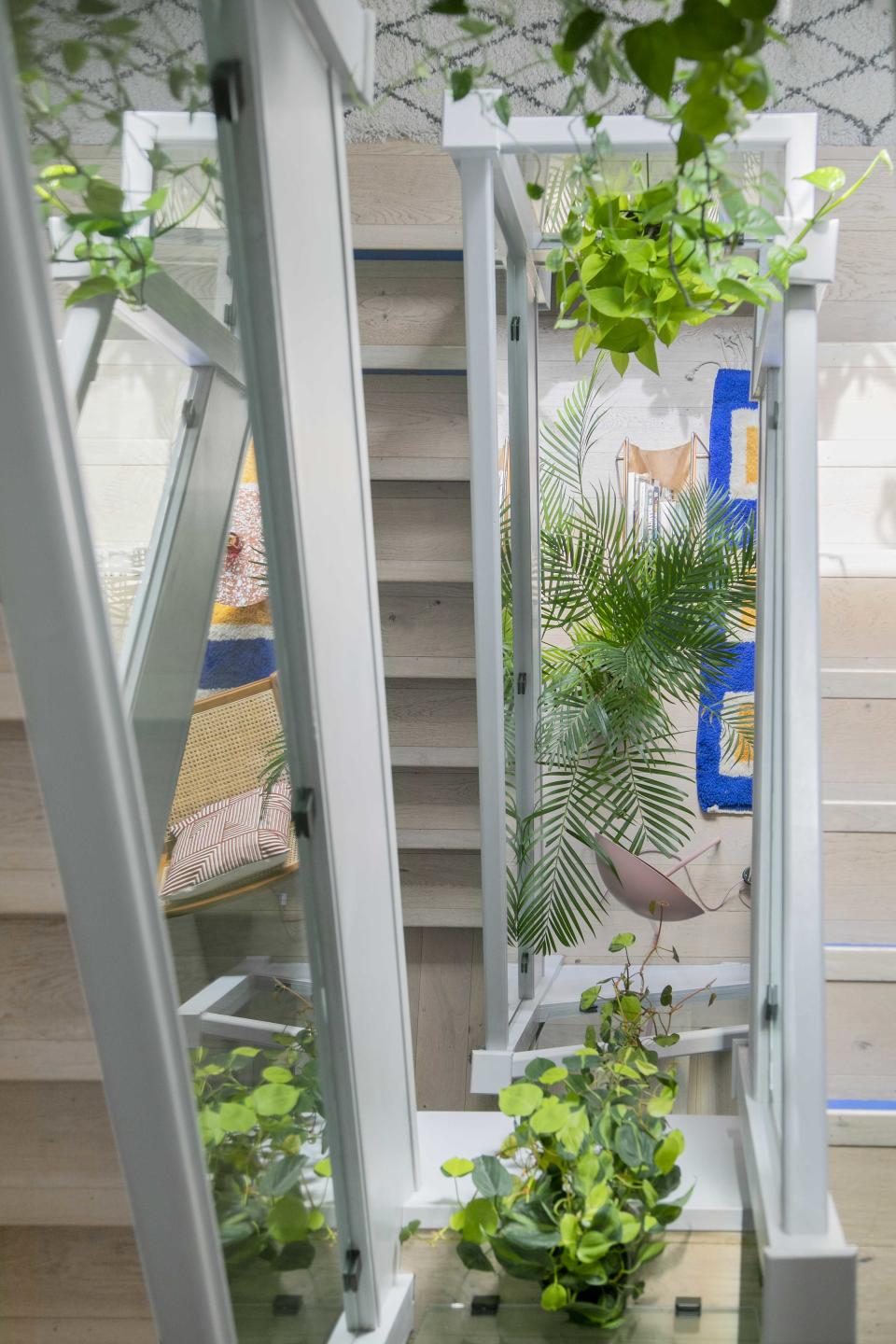
If you're looking for refreshing staircase decorating ideas (other than the usual gallery walls and paint ideas), then a great way to create a truly eye-catching look is with plants. Choose the easiest and fastest plants to grow indoors and accentuate railings with them, making the staircase emerge as the focal point of the house.
'Many plant species are epiphytic and therefore climb on other plants and trees in their natural habitat,' says Alice Dobie, founder of Botanica Studio. 'Once these plants are in our homes they will often need a form of support (this is why you see many plants come on moss poles and frames), but this support can come in the form of growing them up walls, stairs, or across window frames or even cascading down furniture. Plants can climb, trail, hang, grow tall, stay small, or just sit there and grow denser foliage – it is a 'choose your own adventure' experience.'
3. Grow a herb garden in the kitchen
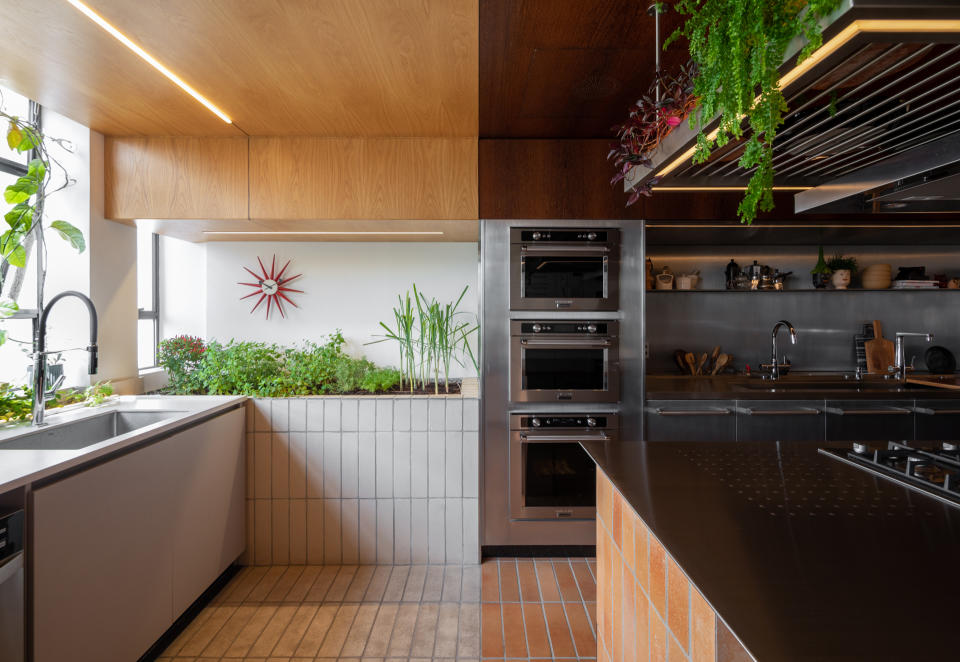
Wondering what herbs to grow in the kitchen? Experts suggest ones that require almost no maintenance.
'One of my favorite, most simple herbs to grow is mint, which is also brilliant for fresh mint teas on summer mornings, and comes in varieties including spearmint, peppermint, and even Mojito mint,' says Whitney Bromberg Hawkings, founder of FLOWERBX. 'Some other versatile options include basil, rosemary, and thyme, used as garnishes, in shrubs, or syrups too.'
4. Pick plants that will thrive indoors

Whether you're refreshing your interior or decorating with plants, keep a few things in mind before starting an indoor garden or an indoor jungle. 'Do not feel you have to have them all right away,' says Alice Dobie, founder of Botanica Studio. 'Take your time with each one you acquire, and learn where it needs to be and how often to water it. Once you have success with one or two, you will feel empowered to continue growing your collection.'
Especially when it comes to apartment gardening for beginners, start small and with the easiest to maintain greens.
'And, you need to be realistic about how many plants can be supported by your windows – it is not as simple as "everything will grow well if only I care for it correctly,' says Darryl Cheng, founder of The House Plant Journal. 'Select the plants that will grow well for the light situation you have. For outdoor gardening, the saying is "the right plant for the right place". When growing plants in moveable containers, you still need to respect this idea and realize that the limiting factor of good growth is the size of your windows.'
5. Make greenery pop with contrasting wall colors
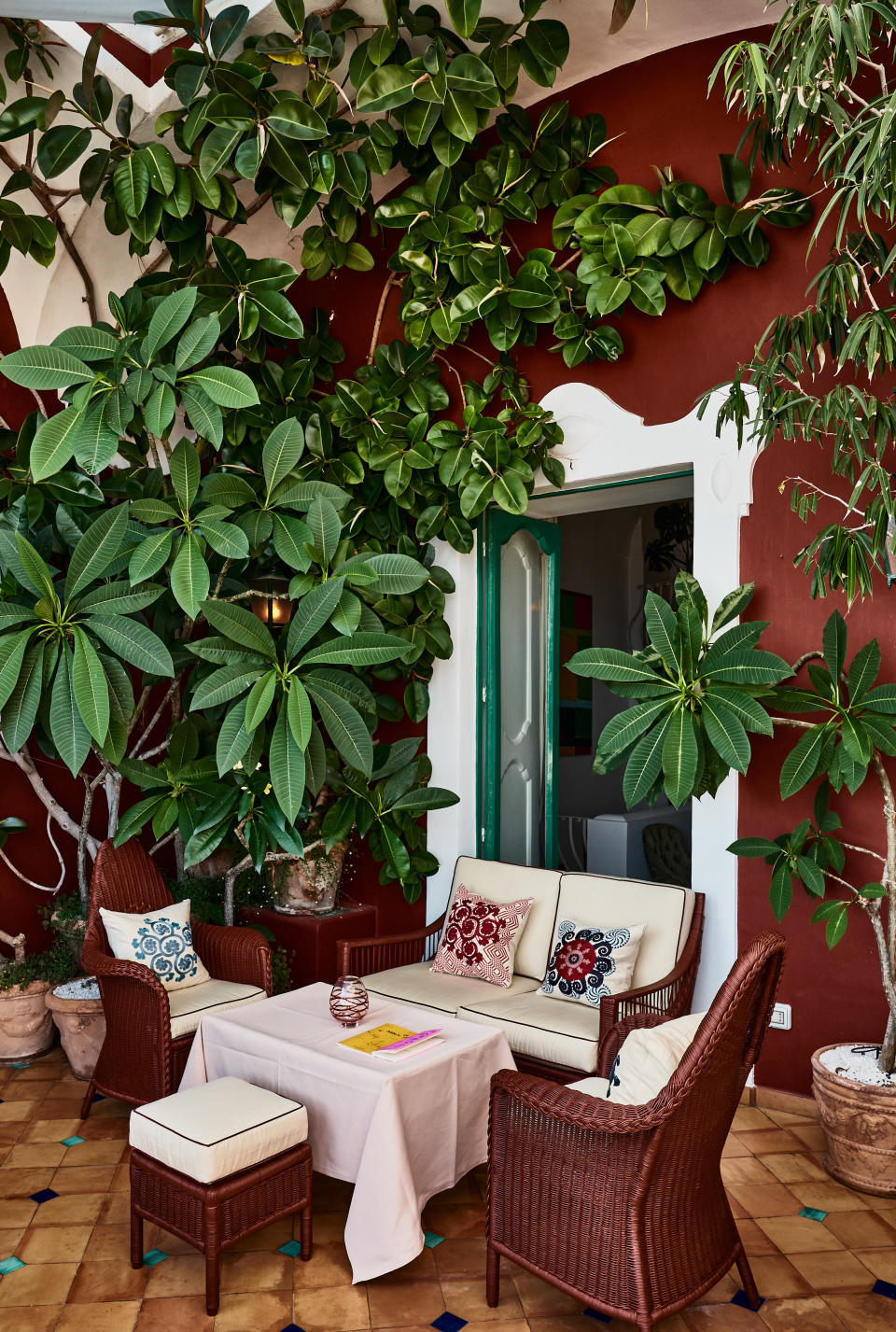
There is so much inspiration to be taken from this stunningly designed space, but their use of indoor plants is genius. We love the organic feel of the houseplants used here. To add more color to the home consider indoor fruit trees that will also clash with your interior decor.
'Consider a staghorn fern to contrast with wall colors,' says Kat Aul Cervoni. 'It has beautiful, unique foliage that’s available on wall-mountable plaques. These plants perform best with higher humidity and need consistent moisture. They’re a good choice for someone who has a decent amount of experience with caring for indoor plants (not necessarily a good beginner-level plant and also not considered low-maintenance).'
6. Ditch wallpaper and cover a wall in a climbing plant
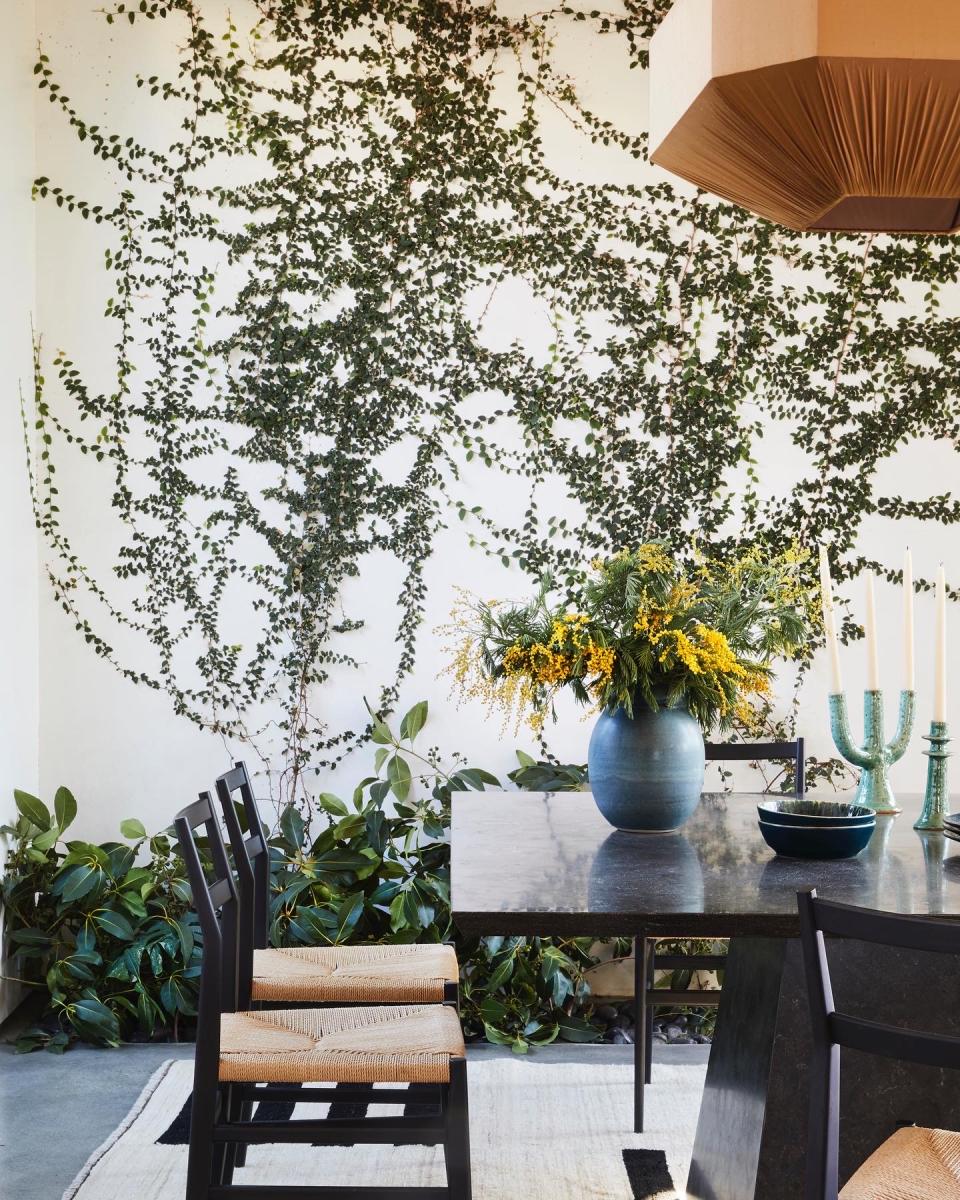
You don't always have to go for a dining room wallpaper when you can substitute with real plants. This space designed by Studio Montemayor has an actual border running along one wall, with lush greenery planted at the base and delicate Creeping Figs trailing up the walls. It adds an unexpected, almost magical feel to this contemporary space.
'We wanted to create a stunning but unexpected backdrop for the dining room and take advantage of the abundant natural light,' says Regina Perez, founder of Studio Montemayor. 'By planting Creeping Fig along the back wall we were able to enhance the indoor/outdoor dining experience, especially when the large floor-to-ceiling sliding glass doors are fully open. Given that the ground floor is an open floor plan encompassing the kitchen, dining, and living rooms, this feeling is extended to the entire space and highlights the best part of living in Los Angeles – the weather.'
7. Create the impact of a living wall with shelving
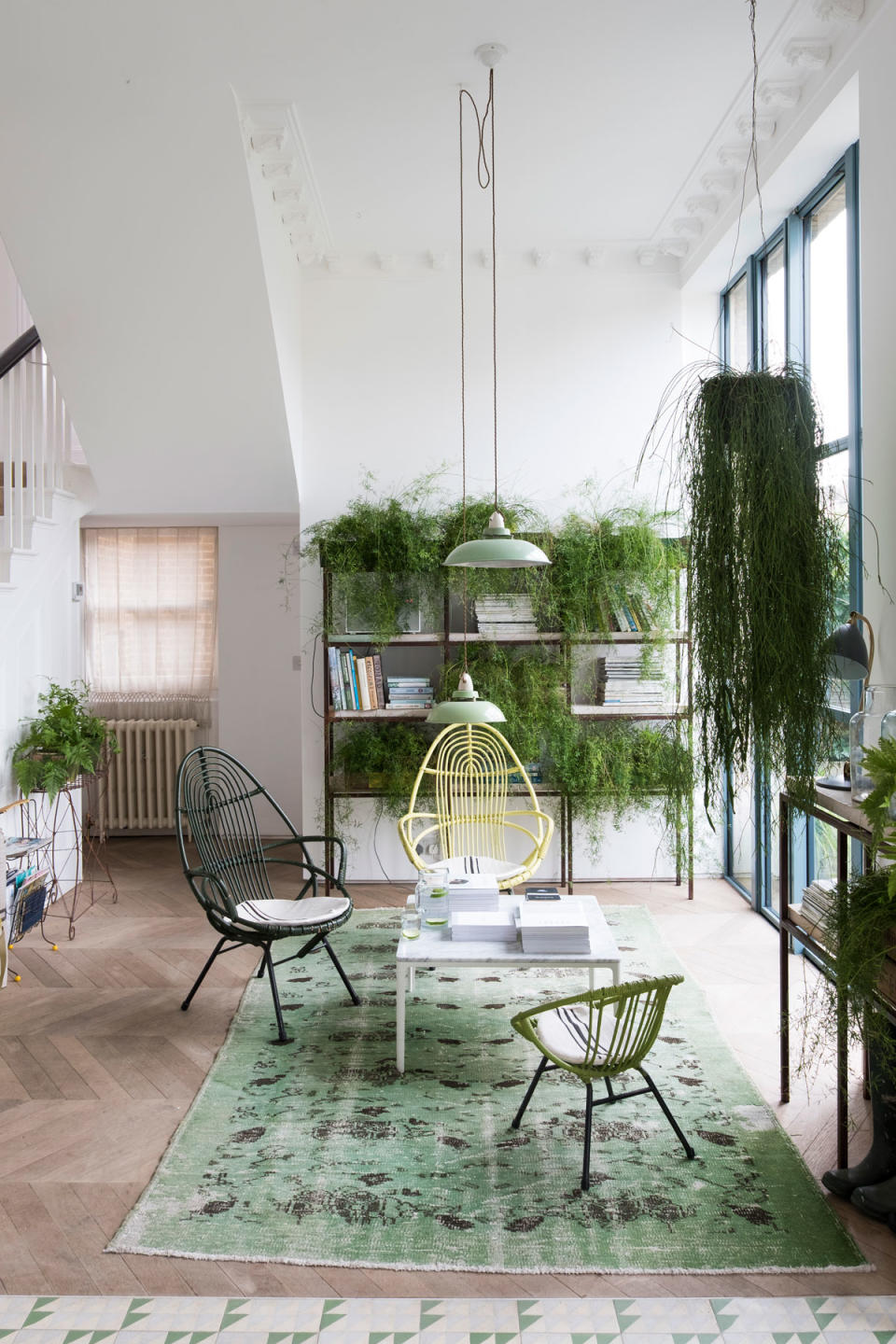
Living walls are a statement way to create an indoor zen garden, but there's no denying they can be expensive to create and aren't suitable for all homes. So a lovely (more low maintenance) alternative is to use shelving to create a similar look.
'Think of Pothos; an easy-to-care for trailing plants, perfect for a wall-mounted planter or for nestling into a bookshelf,' says Kat. 'Available in solid green, solid chartreuse, or uniquely variegated varieties, this plant is great for walls. A spider plant too is an easy-to-care for trailing plant.'
Pick designs that have large gaps between the shelving so you can fit in some larger plants, and go for plants that fill the space. Boston Ferns, Asparagus Ferns, Japanese Ferns and Maidenhair Ferns are good go-tos.
8. Blend indoors and out
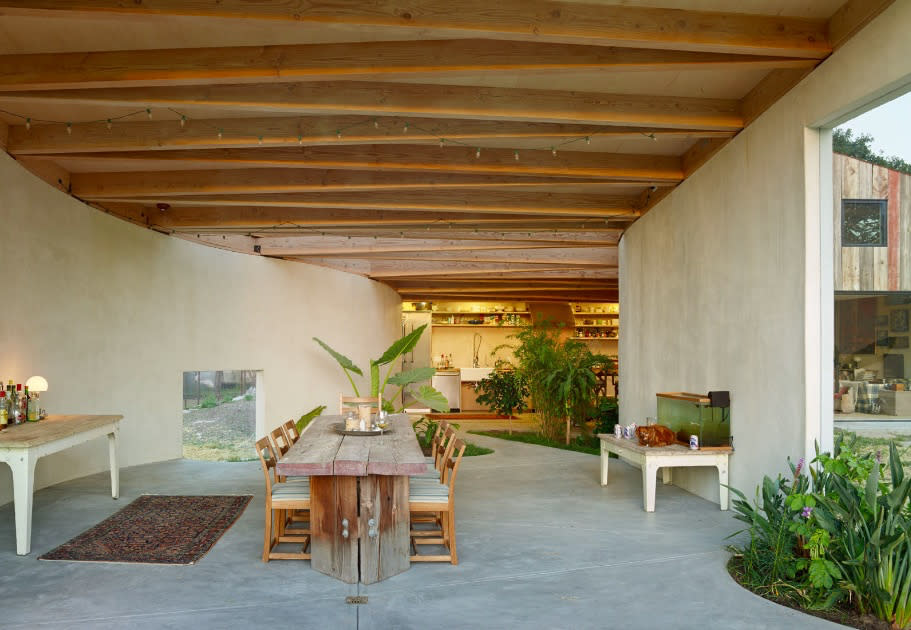
The whole house designed by Mork-Ulnes Architects, has a seamless flow between indoors and out. The indoor plants make the room look more expensive and create a welcoming feel.
'[The homeowners] thrive on seeding new ideas constantly,' says Casper Mork-Ulnes of Mork-Ulnes Architects. 'With this new garden pavilion, they’ve added another wonder to their world. They wanted an indoor/outdoor kitchen and dining room that they could use year-round. The idea was to let the landscape bleed in and out of the building. They imagined it as a jungle, with exotic plants, such as papaya, banana, and mango, inside and out.'
Be inspired by this tranquil space and create a similar feel by grouping pockets of houseplants throughout a space, so you walk amongst greenery as you move around a room.
9. Give smaller potted plants some height
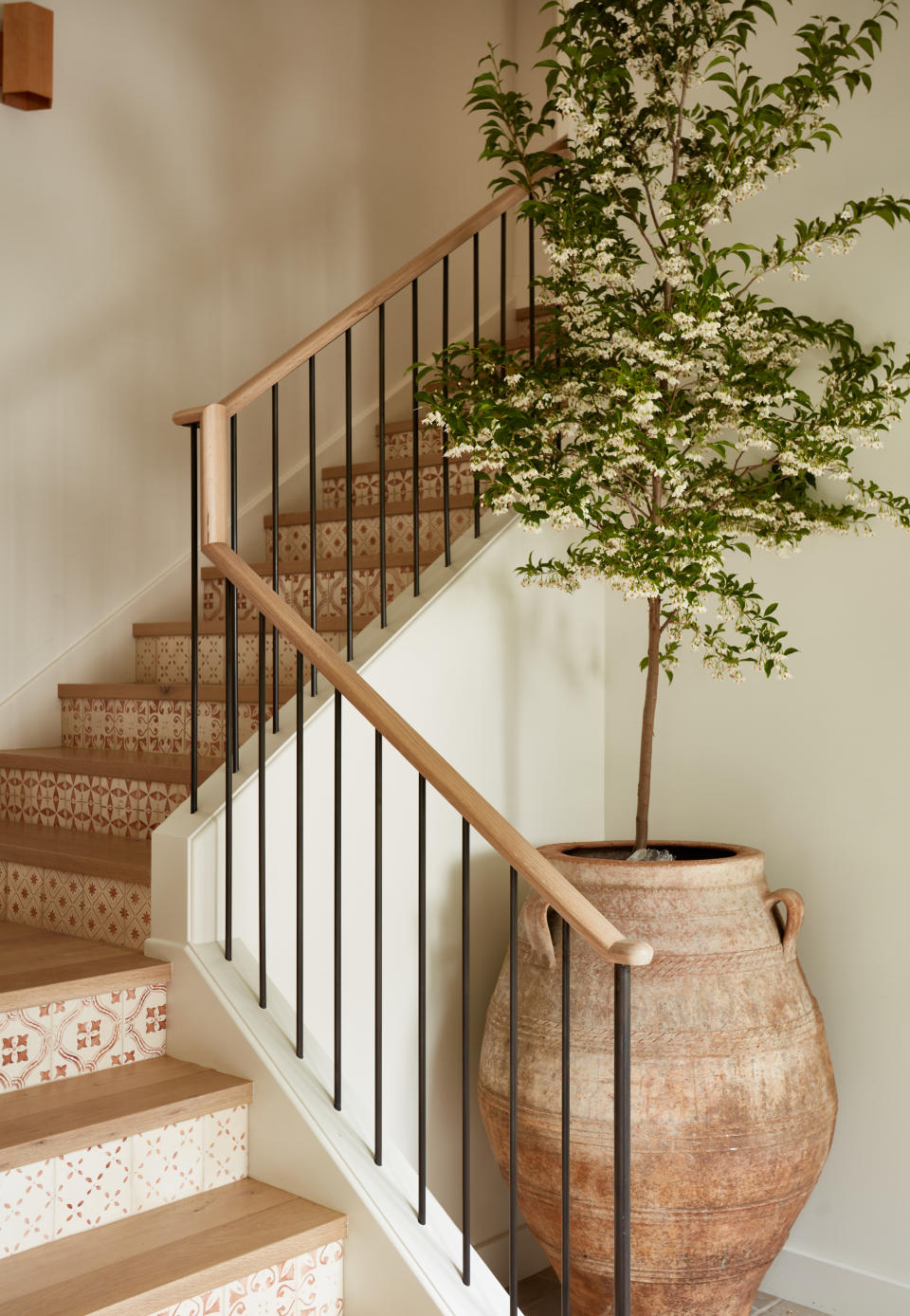
Bringing in trending pots for an indoor garden can add oodles of style to your home. Group together plants that are going to add different heights, shapes, and textures to turn even a small setup into a real display. Snake plants, Peperomia, and Calatheas all look wonderful together as they are all so different.
'Consider Bird of Paradise, as this is a medium to large indoor tree, and start narrow at the base and branch outward into a 'V' shape,' says Kat. 'These like bright, indirect-to-medium light. The Kentia palm has a narrow trunk and base with branches that reach outward into a 'fountain' effect at the top. The Dracaena Marginata is a unique tropical plant with very narrow, sometimes curvy stems/trunks topped with sprays of long thin pompoms of foliage. I love the multi-stem options as they give the best dimension without taking up very much space. These are easy to care for, prefer bright, indirect light, and are available in unique color variegations, including some with pink-ish foliage.'
10. Contrast soft texture with structural plants
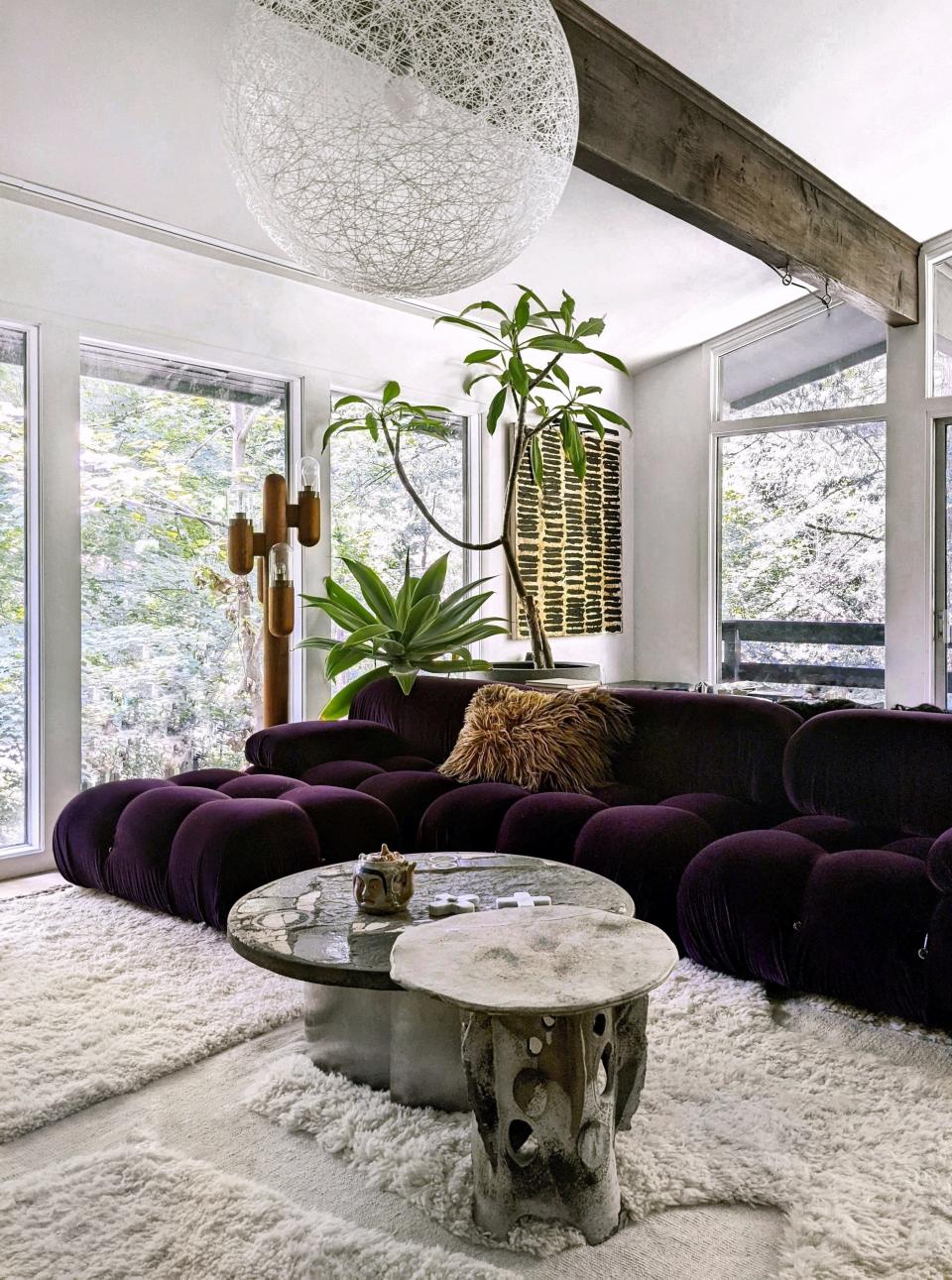
Indoor trees and larger, more statement greens are the best plants for indoor zen garden. This is the living room of designer Crystal Sinclair, and as well as that wonderful clash of green and purple, we love how the soft curves of this room sit with the architectural plants.
But what are the best trees to grow in pots to create this look? 'In magazines, they usually style the space with a tree; the tree doesn't stay there,' says Crystal. 'That said, every client wants a tree, and try as I have, I haven't found many that like the indoors even with decent lighting. Lemon trees are a good option; so are ficus trees. In my house I have an agave (a fave of mine) and a plumeria - both need a lot of light!'
11. Group house plants together for a jungle-like effect
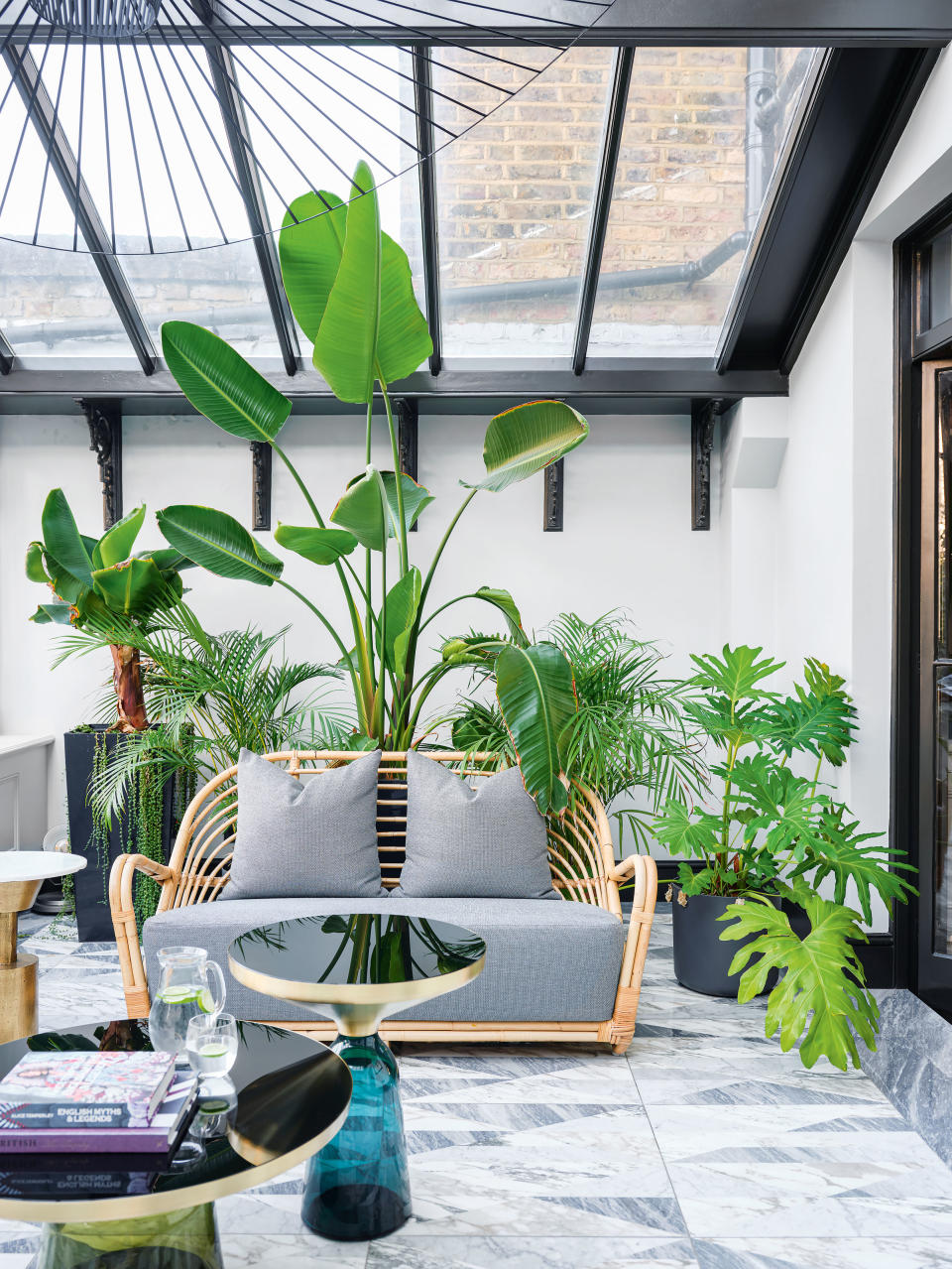
When creating a modern garden indoors, approach it as if you were styling any other part of your home. 'When creating an indoor garden you want to start with scale – not all rooms need to be filled with plants,' says Alice. 'Often, in a smaller room, one key plant within eye line of the door will give the impact of the room being 'planty'- a lovely fuzzy Asparagus Fern, for example, adding some great texture to a desk or a cascading Philodendron just by a window will add interest to a small room.'
'If you want to create a larger display it's nice to stick to the rule of three,' says Alice. 'Often having one larger plant in a corner or to the side of the room with a medium-sized plant just in front and a smaller plant on the floor covering up the pot of the larger plant, a bit like a triangle. This way the foliage of each creates an abundant block of green – this is both easy on the eyes and creates a great feature. The added benefit of grouping plants is that it means they can transpire together and keep the humidity around themselves, thus keeping the plants healthy!'
12. Grow a tree within your kitchen
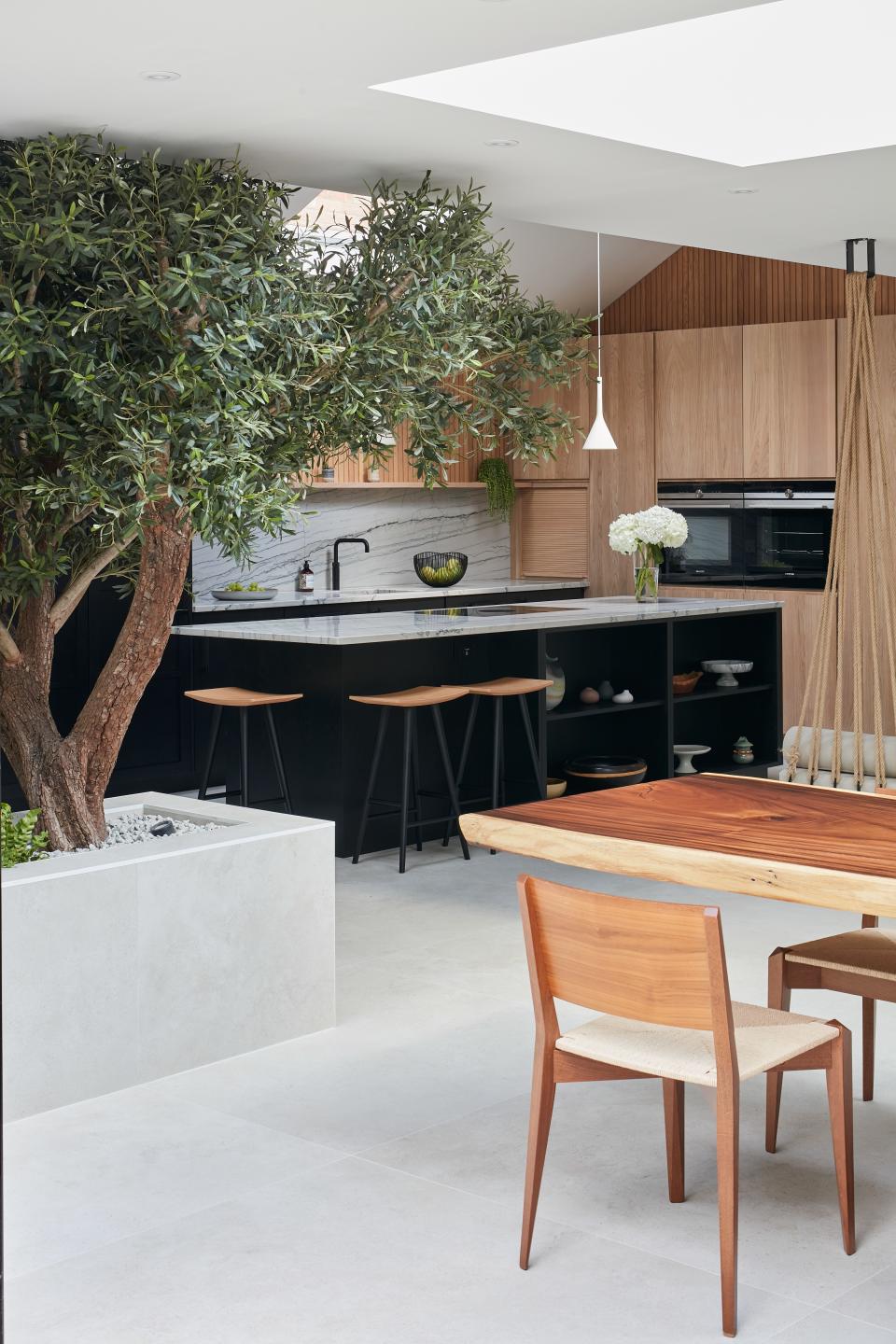
The organic shape of an olive tree contrasting all the clean lines and uniformity of a kitchen is such a beautiful way to soften the room, and bring something unexpected to the design.
In terms of best indoor trees and their care, keep a check on the amount of water a tree needs. 'This will depend on the variety, environment, and size of the pot,' says Kat. 'However, a general rule of thumb is to provide the tree with enough water that you see some excess draining out the base (that way, you know it’s reached the deepest bits of potting soil). Again, be sure to discard excess water from any saucers that may be beneath the base of your pot!'
13. Hang plants at different levels
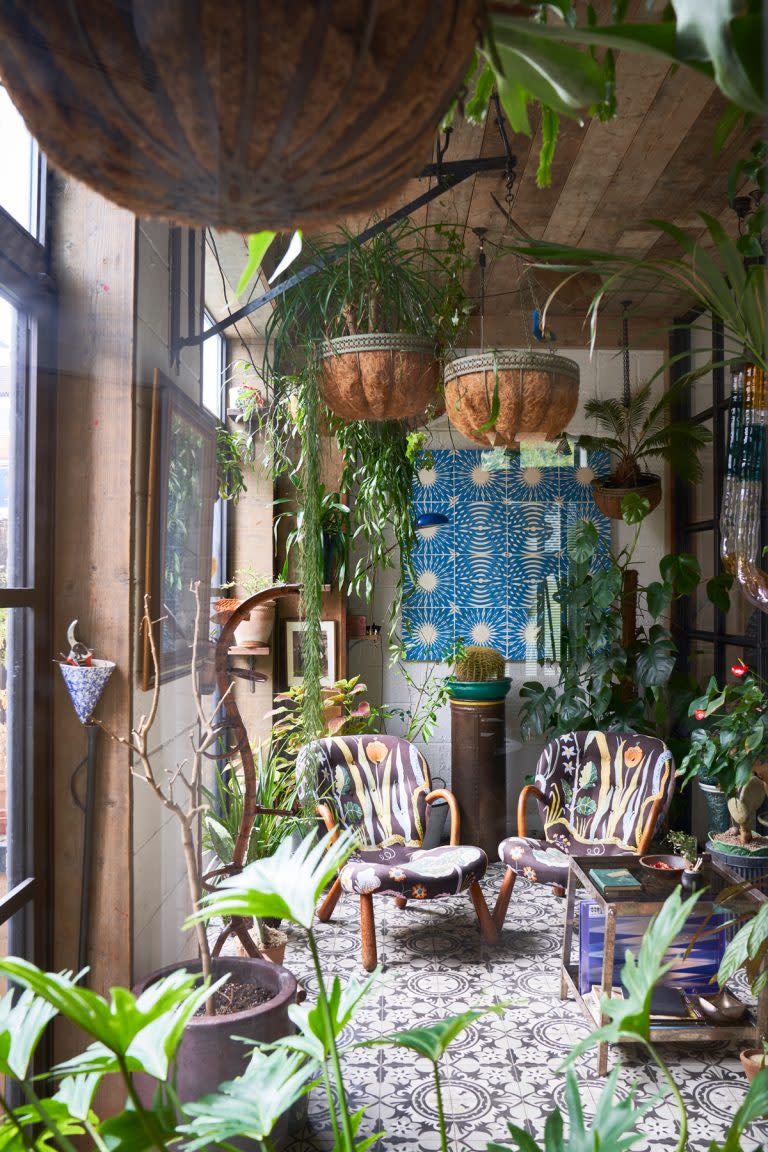
Having plants at different heights within a room is an easier approach to creating that jungle-like feel. A big tip you need to know about hanging plants indoors is 'to use the full height of the room,' says Richard Cheshire, Patch Plant Doctor. 'If you have bookshelves or a mantelpiece, make them a home for trailing plants, like Devil's Ivy. Or embrace hanging plants suspended from the ceiling, like Satin Pothos or Shingle Plants. The longer they grow, the better they look.'
'Create harmony between foliage, containers, and the overall environment,' says Darryl. 'A thriving plant is a signal that the space is conducive to life and vitality. Let the containers and pots compliment your decor but make sure to place the plants where they will grow well. For taller structural plants choose snake plants, Dracaena marginatas or fragrances, Monstera deliciosa (staked to a trellis), Fiddle leaf fig (if you have excellent light), Rubber plants, and Dieffenbachias. And for long, trailing plants – pothos, heart-leaf philodendron, string of hearts (for small spaces), Hoya carnosa (for higher light spaces).'
14. Position an indoor garden to create an inspiring view
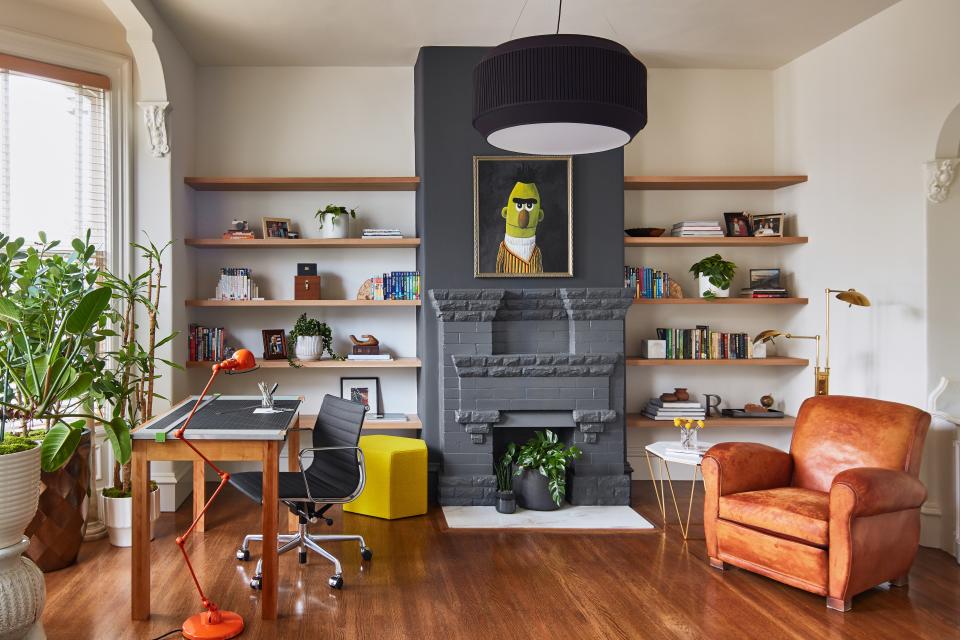
A home office is a great place for an indoor garden – we all know the benefits of having plants around us while we work. In this office plants are positioned between the window and the desk – perfect as they receive a lot of light, and create a beautiful inside.
'We used potted plants as accessories in this office wall display, mixing pot sizes and plant shapes, leaf scale, and pot styles, into the client's display of books and art,' says Emilie. 'The plants act as green sculptures adding texture and interest.'
'Remember to diversify the variety of plants displayed in a room,' adds Emilie. 'Mixing cacti with palms with ferns tells an interesting visual story. And checking sunlight exposure where you plan to place your indoor garden is critical. Each plant has certain environmental requirements to thrive, and you want to make sure lighting conditions are spot on before your purchase.'
What plants are best for starting an indoor garden?
'If you are new to indoor plants, stick with the easy families – Pothos, Sansevieria's, Hoyas, and Philodendrons (there are many, but these are fun starters!),' says Alice. 'All plants work best if you can keep them alive! So starting with plants that need simple care means they can grow and look fantastic as a good foundation for your indoor garden.'
'You can also start small by buying or inheriting smaller plants or plant 'pups' (the 'babies' you get from Aloe Vera and Spiderplants),' says Alice. 'Everything will mature and get bigger with time and the right conditions. If you have a larger space, sometimes one or two statement plants are all you need. You will therefore want to seek out plant varieties that have the potential to grow large and wild, for example, Monsteras, Strelitzias, and Palms.'
'My advice is to start with plants which are easy to grow,' suggests the author of The Jungle Garden, Philip Oostenbrink. 'Look at Spiderplants, Aspidistra, Monstera, etc. Also, look at plant combinations, so put contrasting leaves next to each other. So a large, bold leaf goes next to a finer, more filigree kind of leaf.'
You could have plant displays in any home; just adjust your plantings to the light levels. Even a display of five plants can already give you a jungle effect. Watering is essential and regular feeding too. If you have plants which more or less have the same watering needs, then that would be easier for beginners.'
Can anyone start an indoor garden?
'Yes! Absolutely anyone can start caring and growing for indoor plants, even self-proclaimed 'plant killers',' says Alice. 'The plants we keep in our homes originate from all over the world from the sub-tropics to the warm deserts, you, therefore, want to research where your plant grows naturally and facilitate as closely as you can those conditions.'
'For example, Calatheas are a key member of the prayer plant family and beloved for their beautifully patterned leaves, however, they are from high-humidity forests across South America, and would naturally be nestled on the jungle floor under many layers of dense tree coverage,' says Alice. 'This equates in our homes to them needing a warm, moist environment with indirect light making them ideal bathroom or kitchen plants (any room where a water source releases moisture into the air).'
'Cacti and succulents come from hot, dry desert environments like the western continental USA and North and South Africa,' says Alice. 'They, therefore, like the opposite of prayer plants, namely bright sunshine, and dry air, and can handle a colder dip in temperature. Ideal conditions in our homes are windowsills that are South facing and lovely warm conservatories.'
How do you care for an indoor garden?
'Once you have a good foundation of light and acquire suitable plants, care is simple and can even be therapeutic,' says Darryl. 'Appreciate your plants on a daily basis, which in turn allows you to see if any need watering, cleaning, or pest treatment. Determine when to water by feeling the soil - there are only three different cues to water:
For cacti and succulents - water when the soil is completely dry.
For most leafy tropical plants - water when the soil is about halfway dry.
For most ferns (especially the maidenhair fern) or 'moisture-loving' plants (like begonias and some calatheas) - water when the soil is just slightly dry (you are trying to keep the soil evenly moist.)
By using these watering strategies, I never have to 'keep track' of watering - I just look/feel the soil.'
3 plants for indoor gardens
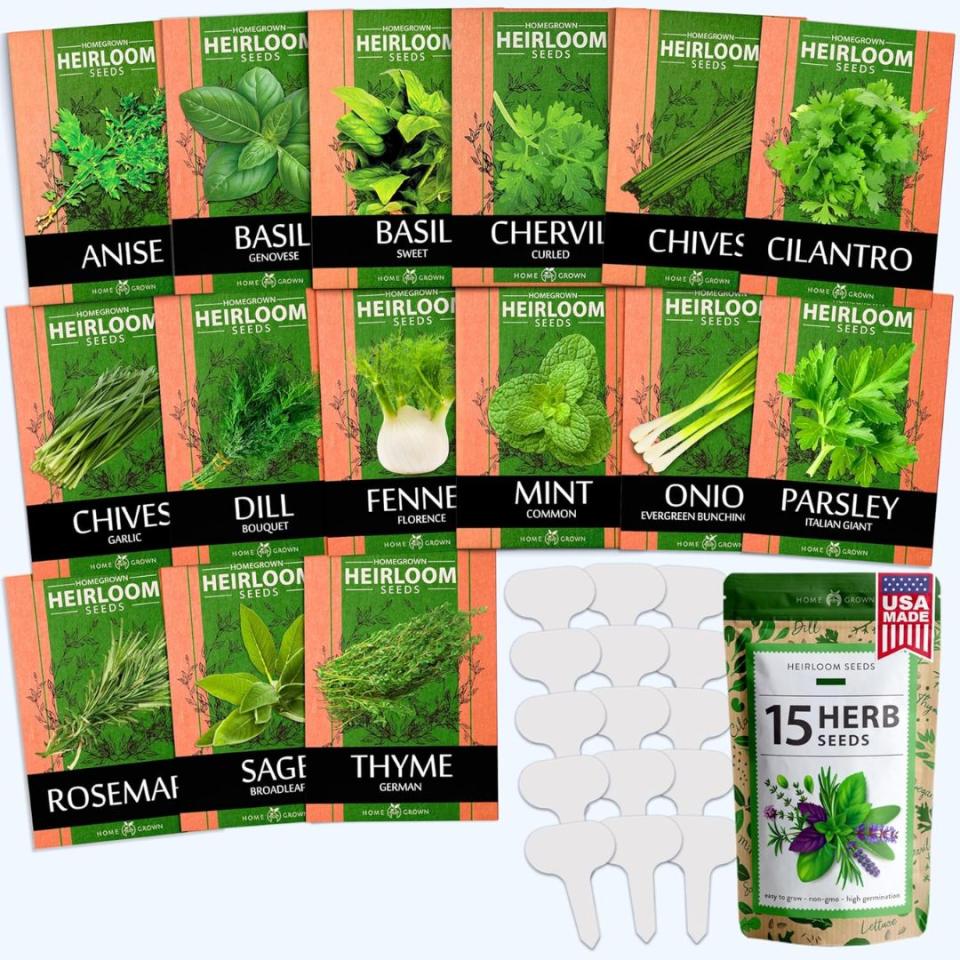
HOME GROWN 15 Culinary Herb Seeds
Use: Indoor and outdoor
Price: $15
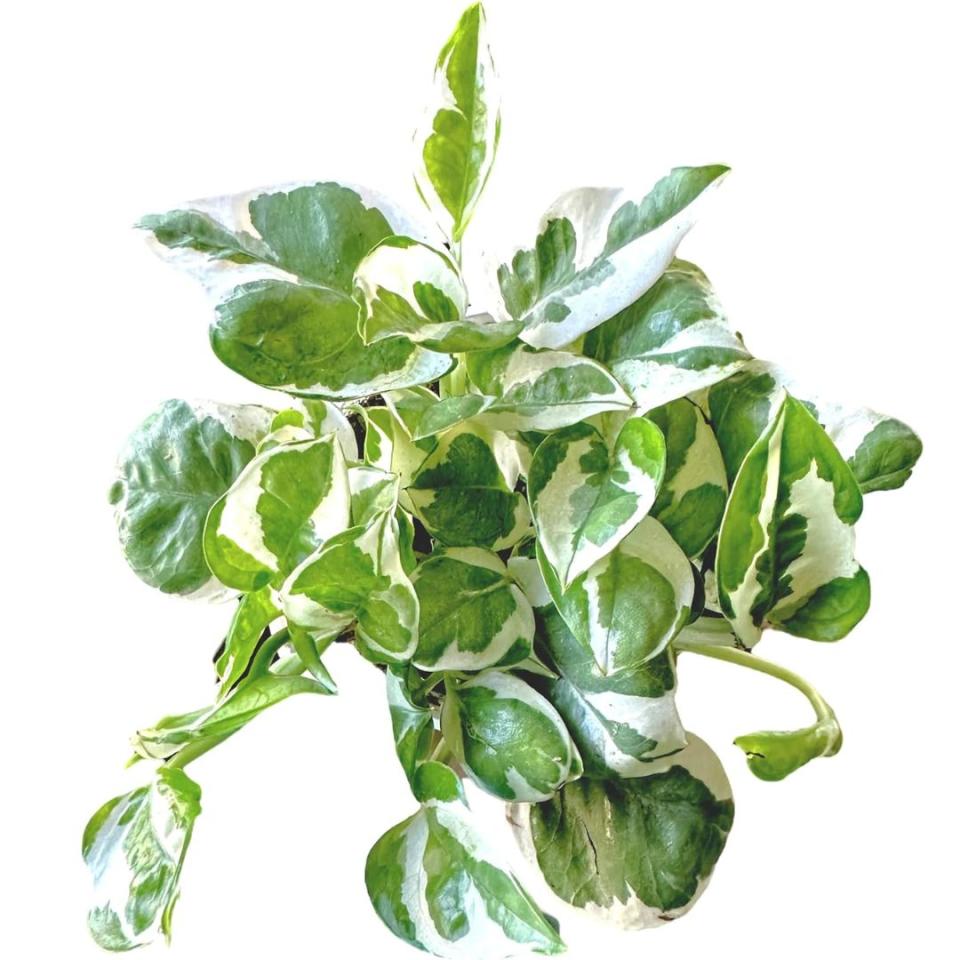
Pothos Indoor Plant
Height: 4 inch
Price: $17

Height: 3-4 feet
Price:$189